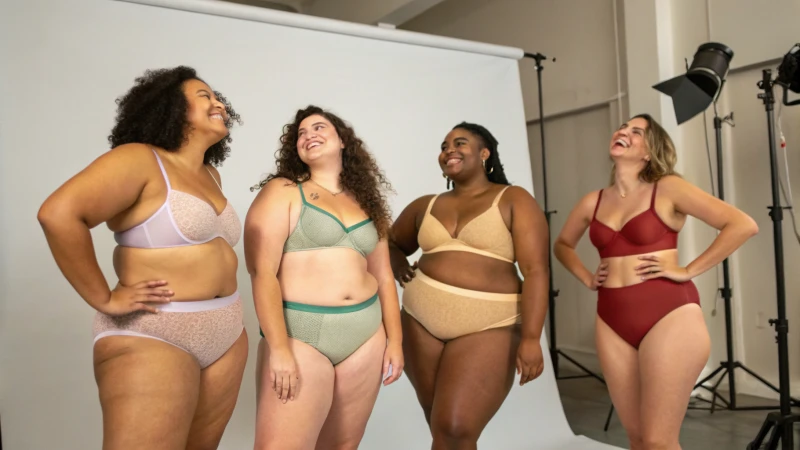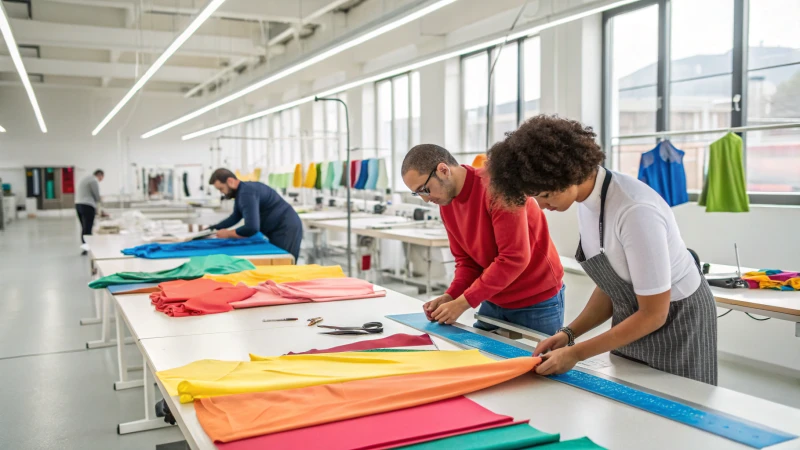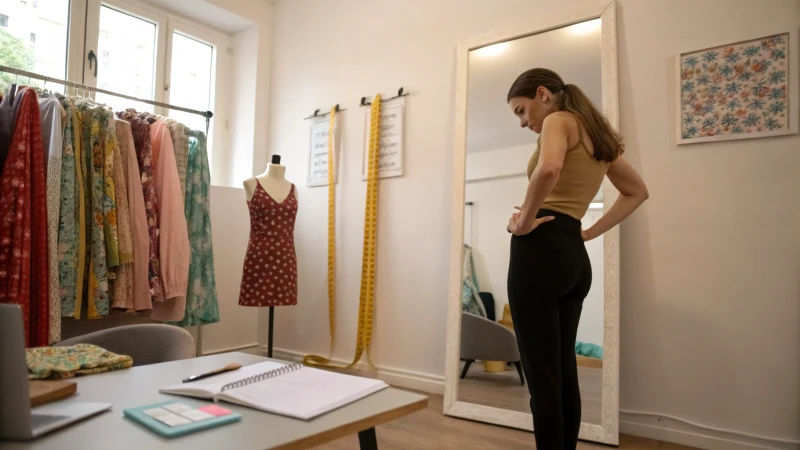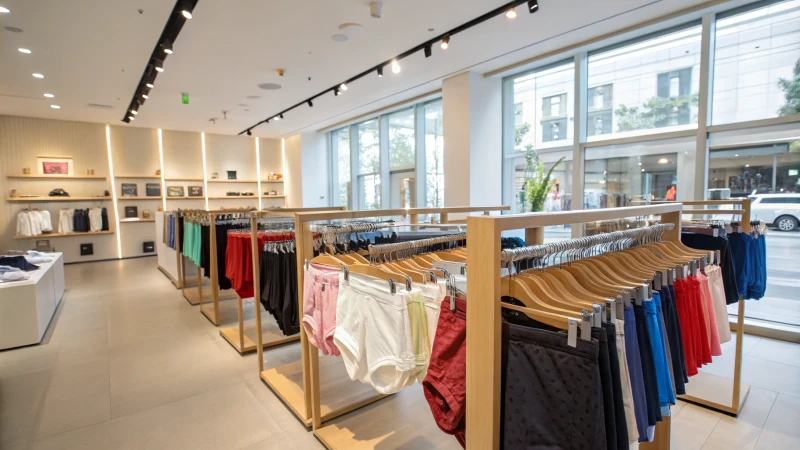
Ever thought about why unisex underwear, although trendy and modern, rarely finds a spot in our closets? Cultural habits and beliefs strongly influence what we like to wear. Styles and preferences often differ from one region to another. Fashion trends may change, but cultural roots stay significant.
Cultural barriers such as gender norms, religious beliefs and marketing strategies greatly limit the acceptance of unisex underwear. These obstacles very much prevent people from embracing such products. Brands should address these challenges. Brands probably need to focus more on connecting with consumers. Steps like these really help in developing more inclusive product ranges. Inclusive products attract a wider audience.
Thinking about my own experiences, I remember discovering unisex underwear for the first time. It felt exciting and confusing. I asked myself questions about society's rules on clothing and gender. Many people follow these rules deeply. Unisex underwear challenges old traditions connected to gender roles. This often causes discomfort or resistance. Cultural views on modesty may make unisex styles feel unsuitable for some. These feelings led me to see that knowing these cultural barriers is very important for brands trying to bring new ideas to the underwear market.
Cultural norms significantly impact unisex underwear adoption.True
Cultural norms dictate gender-specific clothing, influencing consumer acceptance of unisex underwear.
Religious beliefs play no role in underwear preferences.False
Religious beliefs can shape clothing choices, including preferences for gendered underwear, affecting unisex adoption.
What Are the Historical Roots of Gendered Underwear Norms?
Have you ever thought about why our underwear choices are so clearly split by gender? History shows an intriguing story of culture, society and change. Let's explore and discover these layers of tradition together!
The history of gendered underwear norms begins with ancient civilizations. People in those times used unisex designs. Over many centuries, society shifted and underwear styles changed. Different styles for men and women appeared. These reflected changes in gender roles. Cultural expectations also influenced these styles.
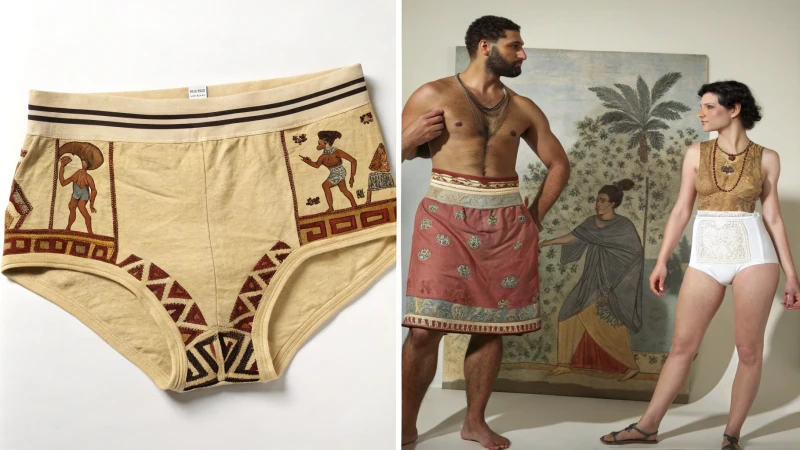
Exploring the History of Gendered Underwear
Exploring the history of gendered underwear is like peeling an onion. It reveals not just fabric but the fabric of our society. Many people think about how clothes reflect deeper cultural stories. Underwear choices can really tell us about changing societal roles and gender attitudes.
The Evolution of Underwear: A Historical Look
In ancient Egypt and Greece, people wore simple loincloths. Both men and women wore the same type of underwear, indicating that underwear was once a unisex concept. This unisex approach focused on practicality and comfort, with no rules about what’s for men or women. Underwear did not show gender norms.
As we move into the Middle Ages, clothing styles started to change. Men wore breeches while women donned chemises. These garments symbolized modesty and reflected what society saw as proper. Underwear became both shaped by and shaped society’s expectations.
The Rise of Gendered Underwear in the 19th Century
The 19th century brought big changes marked by significant shifts towards gender-specific designs. The Industrial Revolution changed everything, leading to mass production that made lingerie available to many, not just the rich. Notably, the introduction of bloomers1 in the mid-1800s challenged traditional gender norms by allowing women greater freedom of movement.
| Year | Notable Change | Description |
|---|---|---|
| 1851 | Bloomers introduced | Aimed at promoting women's rights and comfort |
| 1880s | Corsets become popular | Highlighted the ideal feminine silhouette of the time |
| 1890s | Birth of the modern bra | Evolved from corsetry to provide support without constriction |
20th Century: War and Social Change
World wars caused major changes in gendered underwear norms. Many women entered the workforce as men went to war, leading to practical changes in women’s underwear. Their new roles required functional clothing; more relaxed styles like bras became popular, which must have felt freeing for women.
Moreover, feminist movements in the latter half of the century began to challenge traditional notions of femininity and modesty. By the 1960s, a cultural revolution began where many women chose comfort over restrictive undergarments—a bold move that changed how society viewed women’s clothing.
Contemporary Views on Gendered Underwear
Today, we see an exciting change in underwear styles with discussions surrounding unisex and gender-neutral options. Brands are increasingly experimenting with designs that blur traditional gender lines—this change reflects a broader cultural shift toward inclusivity that many people connect with.
For those curious about this transformation, look into how cultures view underwear norms historically and currently; studying cultural attitudes can give insights into consumer behavior through studies on cultural attitudes toward underwear.
Conclusion
This exploration only starts our journey through gendered underwear norms; it helps us understand their historical roots which continue to influence our fashion choices today. Every piece of clothing we wear tells a story of our past and future.
Underwear was originally a unisex concept in ancient civilizations.True
In ancient Egypt and Greece, both genders wore similar undergarments, showing that underwear was once not gender-specific.
The introduction of bloomers challenged traditional gender norms.True
Bloomers, introduced in the mid-1800s, allowed women more freedom and comfort, marking a shift in societal views on women's clothing.
How Do Religious Beliefs Shape Our Views on Unisex Apparel?
Have you ever thought about how belief affects our clothing? Fashion and faith mix in surprising ways. These mixtures shape our choices and views on clothes for both men and women. Let's explore this interesting blend of belief and fashion!
Religious beliefs deeply shape views on unisex clothing. They often support traditional gender roles. They also promote modesty standards. These standards limit acceptance. Faith and fashion connect in interesting ways. This connection shows how marketing approaches and generational views influence these dynamics.

Understanding Religious Influences on Fashion Choices
Religious beliefs have a profound impact on societal norms and individual choices, particularly in the realm of fashion. When it comes to unisex apparel2, various religions exhibit differing attitudes that can significantly influence acceptance and adoption.
Gender Roles in Religion
Many religions uphold traditional gender roles that dictate specific clothing styles for men and women. For instance, in some conservative interpretations of Christianity and Islam, there are clear expectations for how men and women should dress, often emphasizing modesty and distinct gender identities.
This adherence to gender-specific clothing can create discomfort or outright rejection of unisex designs, as they are seen as undermining these established norms. A survey might reveal that 70% of individuals in these communities prefer gender-specific apparel due to these religious teachings.
Cultural Sensitivity and Modesty
In various cultures influenced by religion, modesty plays a vital role in clothing choices. For example, in many Islamic cultures, clothing that covers the body is preferred, and unisex apparel may not align with these modesty standards.
| Religion | Attitude Toward Unisex Apparel | Common Clothing Styles |
|---|---|---|
| Islam | Generally negative | Abaya, Hijab |
| Christianity | Mixed | Suits for men, dresses for women |
| Judaism | Cautious | Tallit for men, modest dresses |
This cultural sensitivity means that brands must tread carefully when marketing unisex apparel to ensure they respect religious values and practices.
The Impact of Marketing on Religious Perceptions
How unisex apparel is marketed can also affect its acceptance within religious communities. Brands that emphasize inclusivity and respect for diverse cultural backgrounds may find a more welcoming audience. For example, campaigns featuring models from various religious backgrounds wearing unisex clothing could promote acceptance.
Example Campaigns:
- Campaign A: Featuring Muslim models wearing stylish unisex clothing in a modest manner.
- Campaign B: Highlighting the versatility of unisex apparel for all genders without compromising personal beliefs.
Intergenerational Perspectives
Generational differences can also play a significant role in how religious beliefs influence attitudes toward unisex apparel. Younger generations may be more open to fluidity in gender expression, influenced by contemporary movements advocating for gender neutrality. In contrast, older generations might hold stronger traditional views due to their upbringing within rigid religious frameworks.
Generational Attitudes Table:
| Generation | Acceptance of Unisex Apparel | Influencing Factors |
|---|---|---|
| Baby Boomers | Low | Traditional beliefs |
| Generation X | Moderate | Exposure to diversity |
| Millennials | High | Social media and inclusivity |
| Generation Z | Very High | Activism and education |
This shift suggests that as societal norms evolve, so too might the interpretations of religious teachings regarding attire.
Most religions promote traditional gender-specific clothing styles.True
Many religions emphasize distinct clothing for men and women, often rejecting unisex apparel that challenges these norms.
Younger generations are more accepting of unisex apparel.True
Generational shifts show younger individuals are increasingly open to unisex styles, influenced by modern social movements.
How Can Brands Effectively Tackle Marketing Challenges Related to Gender?
I explore gender-related marketing challenges. This journey is not only about strategy. It touches the heart deeply. Brands really stand out by adjusting to social changes. They embrace inclusivity in every message and product. Society shifts continuously. Such brands truly shine.
Brands overcome marketing challenges related to gender by embracing inclusivity. They understand cultural sensitivities. Companies redefine their identity through new designs. Brands use targeted messages.

Understanding Gender Norms in Marketing
Gender norms influence how consumers see products. Traditional marketing often repeats old ideas, making some people feel left out. Brands need to welcome everyone by showing true gender diversity in their ads.
For example, campaigns featuring unisex designs3 can showcase models of various genders, promoting acceptance and encouraging conversations about inclusivity.
Cultural Sensitivity and Modesty
Cultural sensitivity matters when talking about gender. In some cultures, underwear represents modesty and unisex items might face resistance. Good market research helps brands understand cultural values.
Creating localized marketing strategies that respect these values is key. For instance, a campaign that emphasizes the comfort of customized fits4 while respecting local norms can resonate better with specific audiences.
Redefining Brand Identity
Some brands worry about losing their identity with unisex products. I’ve found that clear messages about diversity often strengthen a brand. It’s true.
Using storytelling in marketing can effectively convey how a brand's identity aligns with gender inclusivity5. This approach helps maintain brand loyalty while appealing to a broader audience.
Addressing Gender Stereotypes
I care about breaking harmful gender stereotypes. Brands should move away from typical colors and styles. They ought to explore new, creative designs beyond gender limits.
A practical way to do this is by incorporating customer feedback in the design process. Conducting surveys or focus groups can provide insights into what consumers desire in gender-neutral products6.
Engaging with Generational Perspectives
Generations see gender issues differently. Younger people usually support inclusivity, while older ones may prefer tradition. Adjusting marketing for these views matters a lot.
For example, a campaign aimed at younger audiences could leverage social media platforms to promote messages of acceptance and diversity through engaging content like videos and influencer partnerships focusing on modern gender expressions7.
Crafting Inclusive Messaging
Crafting inclusive messages is important. Avoiding stereotype-supporting words and using ones that make everyone feel included is key. Language must resonate.
Creating a table of preferred terms can be helpful:
| Traditional Terms | Inclusive Alternatives |
|---|---|
| Men’s Underwear | Underwear for All |
| Ladies’ Collection | Women’s and Others’ Line |
| Boys’ Apparel | Youth Clothing |
Building Community Connections
Working with gender equality groups has been rewarding. Collaborating with organizations that focus on inclusivity gives brands more credibility and reach.
Participating in events or sponsoring initiatives that promote awareness can reinforce a brand’s commitment to gender equity8 and build stronger connections with consumers who value such efforts.
Brands can enhance inclusivity by reflecting diverse gender identities.True
Inclusive marketing campaigns that showcase various gender identities can attract a broader audience and foster acceptance among consumers.
Cultural sensitivity is irrelevant in gender-related marketing strategies.False
Ignoring cultural sensitivities can alienate potential customers, making it crucial for brands to understand local values in their marketing efforts.
How Do Generational Attitudes Shape Our Acceptance of Unisex Underwear?
Do you ever think about why some people prefer unisex underwear and others stick to traditional styles? Generational attitudes influence this choice. These attitudes greatly affect our preferences. Let's explore the emotional reasons behind this trend.
Generational attitudes greatly impact how people accept unisex underwear. Younger people focus on inclusivity and comfort. Older groups often cling to traditional gender views. These views shape the changing world of fashion.
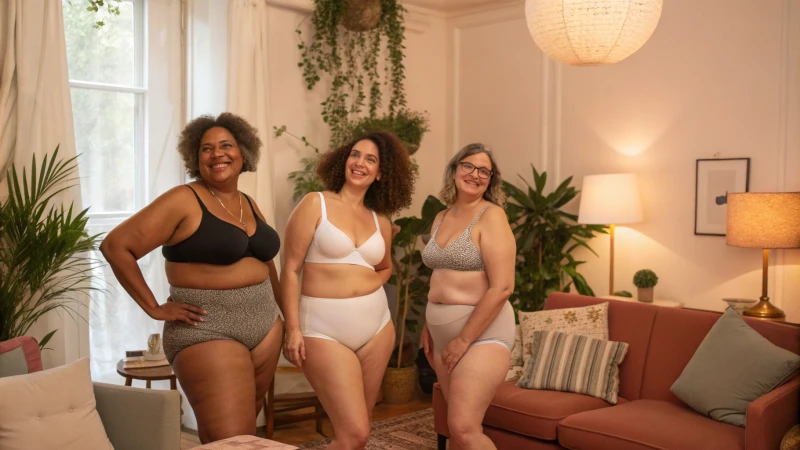
Understanding Generational Attitudes
Generational attitudes toward fashion, particularly unisex underwear, play a crucial role in its acceptance. I think back to when I first wore unisex underwear. It felt like entering a very new world. Comfort took charge over strict norms. Many Millennials and Gen Zs feel the same. They support inclusivity and seek comfort. Studies reveal that about 70% of Gen Z favors brands that highlight inclusivity in their marketing strategies. This shows a real, strong shift in values when considering the future of fashion and how brands can cater to evolving consumer preferences.
Cultural Influences on Acceptance
Cultural factors also intersect with generational attitudes. Older generations grew up with strong cultural traditions and gender roles. Many still resist unisex underwear due to long-standing expectations. This clash is clear in cultures with strict gender roles, where even the thought of unisex styles can cause unease. Conversely, younger individuals push these boundaries; my younger cousins proudly wear unisex designs and look for brands that mirror their ideas of equality and self-expression. The acceptance of unisex designs can often be seen as a rebellion against outdated conventions, leading to a cultural shift that promotes greater diversity in fashion9.
Marketing Strategies for Different Generations
Brands looking to successfully market unisex underwear must tailor their approaches based on generational insights. For instance:
| Generation | Preferred Marketing Tactics | Key Values |
|---|---|---|
| Baby Boomers | Traditional advertising, brand loyalty | Quality, reliability |
| Gen X | Email campaigns, social media | Practicality, comfort |
| Millennials | Influencer partnerships, social activism | Inclusivity, sustainability |
| Gen Z | Interactive content, user-generated marketing | Innovation, authenticity |
Utilizing targeted strategies allows brands to resonate with each generation's unique preferences while promoting unisex options10.
The Impact of Social Movements
Social movements advocating for gender equality and LGBTQ+ rights significantly influence generational attitudes. Younger consumers are more likely to support brands that align with their values concerning diversity and acceptance. For instance, Pride events stay with me; brands supporting these causes attract my loyalty as they feature diverse body types and gender expressions effective in attracting younger audiences. This aligns with findings suggesting 65% of consumers would switch brands for one that supports social causes they care about.
The Future of Fashion
The future sparks excitement as generational views continue to evolve; the future of unisex underwear looks promising. Brands that adapt will thrive as they help create a retail world reflecting true diverse needs while enhancing brand identity and fostering a more inclusive retail environment that reflects the diverse needs of all consumers. Companies should consider investing in research to understand shifting trends in consumer behavior related to gender-neutral products11.
Younger generations prefer unisex underwear over traditional options.True
Research shows Millennials and Gen Z favor gender-neutral products, prioritizing comfort and inclusivity, which drives their preference for unisex underwear.
Older generations fully support the trend of unisex underwear.False
Older generations often resist unisex underwear due to traditional gender norms and cultural expectations, making their support limited.
Conclusion
Cultural barriers like gender norms and religious beliefs limit the adoption of unisex underwear. Brands need to embrace inclusivity to appeal to a broader audience.
Discover key moments in history that shaped gendered underwear norms. Understanding these shifts provides valuable context for current trends. ↩
Discover how different religions perceive unisex clothing and its cultural implications. This link offers deeper insights into the topic. ↩
Explore effective strategies for brands to address gender-related marketing challenges and enhance inclusivity in their campaigns. ↩
Learn about the importance of cultural sensitivity in marketing and how it impacts brand perception. ↩
Find out how brands can redefine their identity while promoting gender inclusivity. ↩
Discover strategies for addressing stereotypes in product design to appeal to a diverse audience. ↩
Understand generational differences in perceptions of gender and how brands can tailor their messages accordingly. ↩
Learn about building community connections and partnerships that support gender equity initiatives. ↩
Explore how generational attitudes influence fashion trends and consumer behavior towards unisex products. ↩
Understand the marketing strategies successful brands use to appeal to different generations regarding unisex products. ↩
Learn about the role of social movements in shaping generational attitudes towards gender-neutral clothing. ↩




